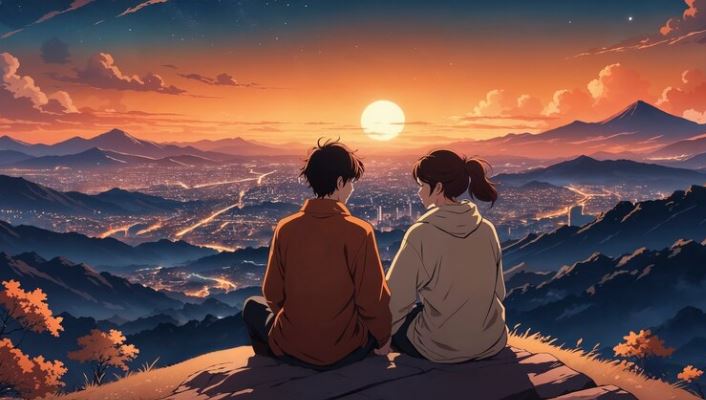Every Studio Ghibli film has a certain magic woven into it, an intimacy created through long hours, minute details, and a patience that is almost meditative. Artificial intelligence has recently been able to replicate that magic in a viral trend that is currently sweeping social media. A headshot can be transformed into a fantasy portrait with a few prompts; a selfie can become a dream reminiscent of Ghibli. It’s incredibly fast. The beauty? At first glance, they appear strikingly similar. Beneath the allure, however, is a more profound discussion concerning artistry, authenticity, and the direction of artistic expression.
OpenAI made it possible for users to produce animated images that resemble Ghibli’s trademark style by incorporating its image generator into GPT-4o. Millions of people have been able to turn ordinary photos into whimsically stylized art thanks to this feature, which is quick, easy to use, and incredibly effective. Filters that promise the “Ghibli effect” with a few clicks have also become popular in recent weeks thanks to websites like Getimg.ai and OpenArt. However, worries about privacy, ethics, and intellectual property are growing even as people are excitedly sharing their AI portraits.
Ghibli Art AI Overview
| Category | Details |
|---|---|
| Emulated Style | Studio Ghibli (Miyazaki-inspired) |
| AI Tools Used | GPT-4o, Midjourney, DALL·E, Getimg.ai, OpenArt |
| Purpose of Trend | Transforming images into whimsical “Ghibli-style” art |
| Key Criticism | Lacks artistic depth, unauthorized use of style |
| Reported Risks | Deepfakes, data theft, political misuse |
| Key Figures Quoted | Sam Altman, Usman Riaz |
| Law Enforcement Alerts | Cybercrime units in Tamil Nadu, India |
| Studio Ghibli Reaction | No formal statement released yet |
| Cultural Concerns | Style used to illustrate sensitive political imagery |
| Reference | Business Insider – Altman’s Defense of AI Art |
Technology became a lifeline for creativity during the pandemic, providing digital canvases in place of physical studios. Since then, tools powered by artificial intelligence have become increasingly sophisticated—capable of producing art in mere seconds. But there is a price for that efficiency. A growing cultural erosion, where style and substance are separated and storytelling is reduced to decoration, has been exposed by the recent explosion of Ghibli-style art.
Hayao Miyazaki, a co-founder of Studio Ghibli, has always created art that goes beyond the frame. His emotionally complex, poetically rendered, and frequently politically charged work has encouraged countless viewers to view animation as a form of introspection as well as entertainment. Not only are movies like Spirited Away and Grave of the Fireflies entertaining, but they also capture resiliency, anxieties, and the silent power of daily existence. Similar to a well-known tune played on a piano with half of its keys missing, something fundamental is lost when AI replicates these images without the underlying intention.

Strong opposition to the trend has been expressed by critics such as Usman Riaz, director of The Glassworker. “AI is the future—but it’s a tool, not the artist,” he wrote in a particularly poignant post. In contrast to algorithmic efficiency, his own film was hand-drawn over a ten-year period. By working diligently, his team was able to replicate the spirit of storytelling that Ghibli invented—not by copying images, but by respecting the spirit.
The effects have occasionally gone beyond aesthetics. Recently, the destruction of the Babri Masjid—a very delicate moment in Indian history—was recreated using artificial intelligence (AI)-generated Ghibli-style images. It makes sense that reimagining such moments in an art form associated with innocence has provoked outrage. It was startling how tone and context were so different. Additionally, it demonstrated how easily unchecked AI can be directed toward narratives that mislead rather than educate.
AI image generators are able to replicate familiar styles with remarkable accuracy by using training data from innumerable works of art, many of which were created without the creators’ knowledge. However, they function mechanically, devoid of emotion, memory, or introspection. Their outputs lack the weight of intention, despite being visually coherent. They don’t interpret, question, or give a damn. When commercial agendas, political ideologies, or even disinformation campaigns start to disguise themselves in borrowed visual warmth, this detachment becomes especially concerning.
However, the technology is not intrinsically dangerous. When used carefully, it can be incredibly versatile, especially for independent creators who want to explore styles they like or visualize ideas. As usual, the application is crucial. Ghibli-inspired AI filters can provide a useful shortcut for marketers developing storybook campaigns, game designers sketching conceptual spaces, or students learning animation. However, shortcuts need to be properly identified, and their creators need to be acknowledged, valued, and paid.
Discussions about artistic ownership and digital rights have heated up over the last ten years, but AI has given them a new urgency. Developers have started imposing content restrictions since OpenAI’s advanced generator was released, limiting prompts that evoke particular artistic identities or figures. Although welcome, these actions are still reactive. In the era of machine learning, there is currently no agreed-upon framework for safeguarding visual style, which is frequently intangible and extremely personal.
This problem is made even more delicate when considering cultural heritage. Whether set in rural Japan or fantastical cities, Ghibli’s tales have emotional and historical resonance. They are influenced by Miyazaki’s support for artistic autonomy, his critique of environmental degradation, and his pacifist beliefs. It can be culturally dissonant to use this style to portray unrelated events or characters without taking that history into consideration.
However, there is a place for optimism. As AI art tools advance in the upcoming years, discussions regarding their moral application will also change. Audiences, artists, and technologists can work together to mold these tools in ways that promote respect, empathy, and creativity. This could entail improved attribution schemes, new licensing models, or educational initiatives that make it clearer where inspiration and appropriation meet.



